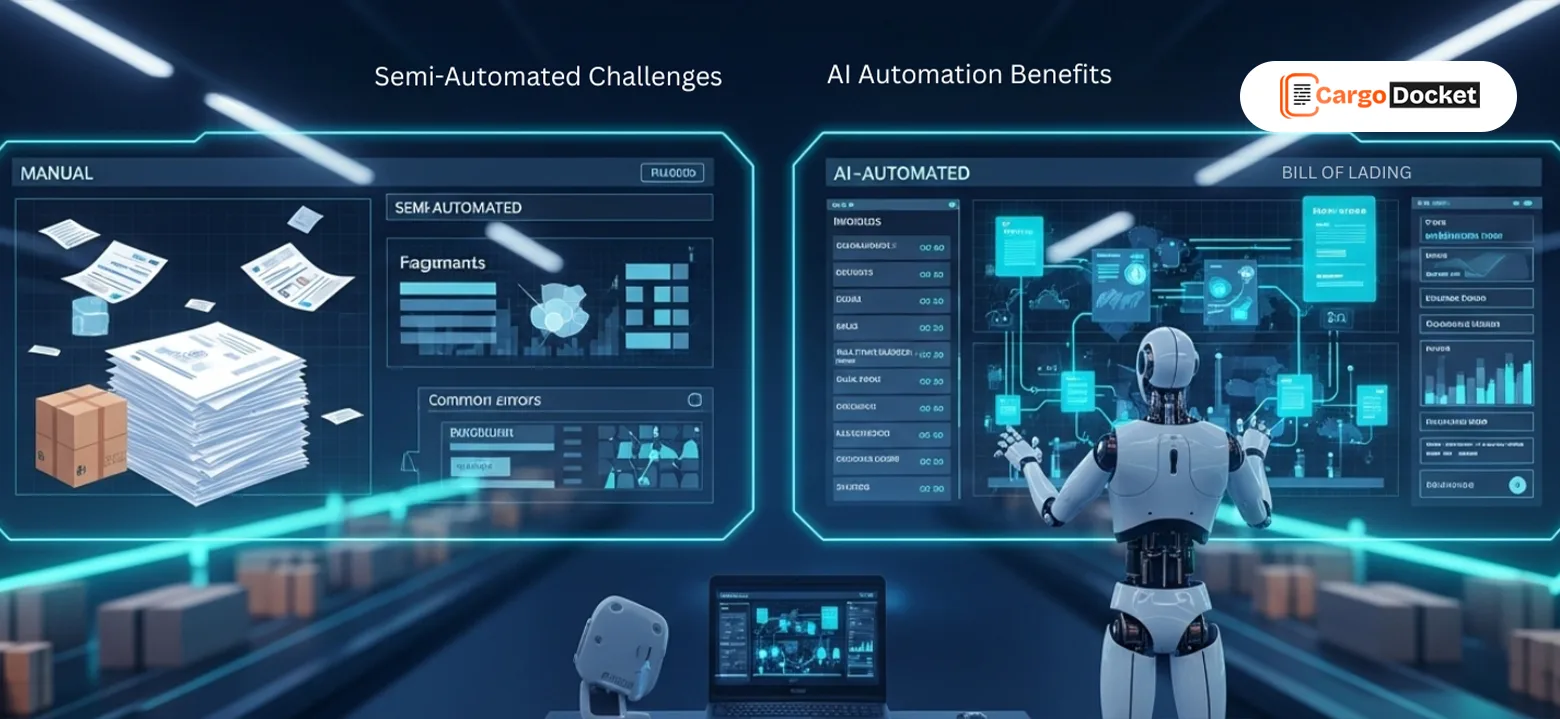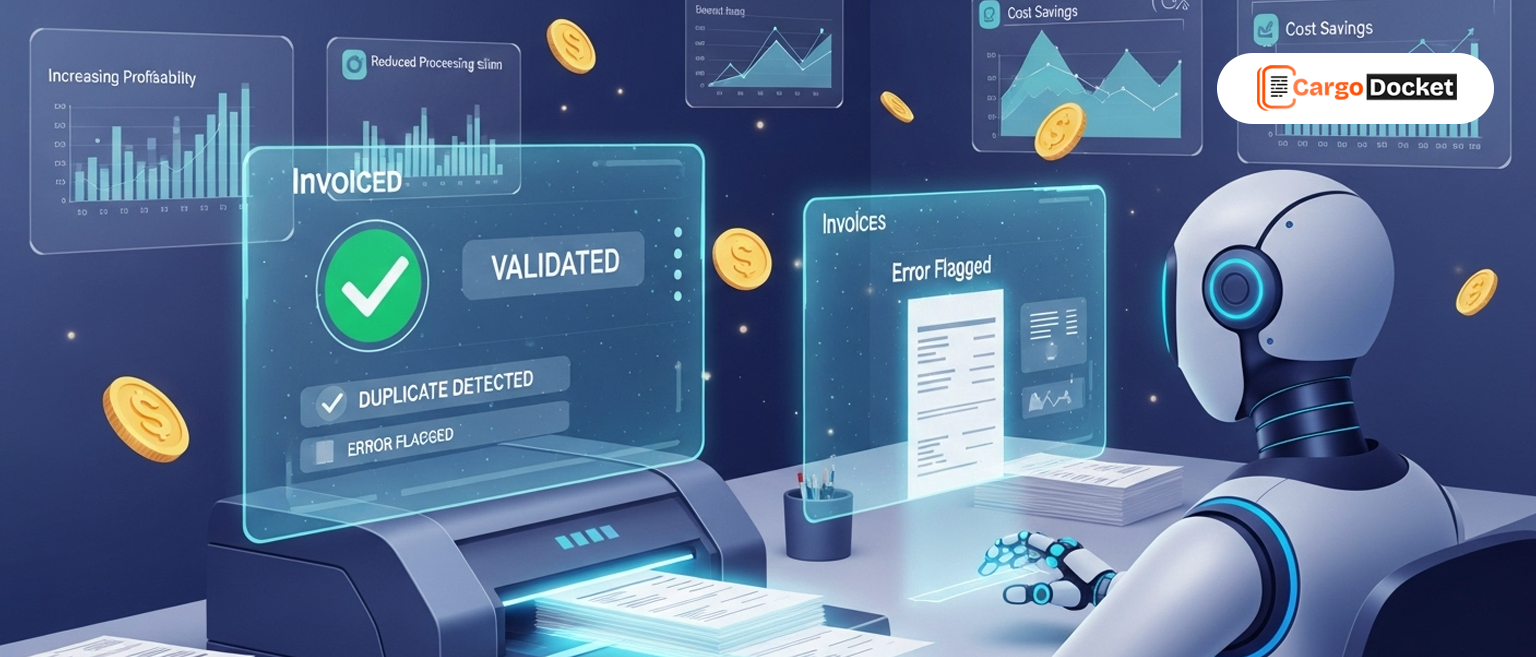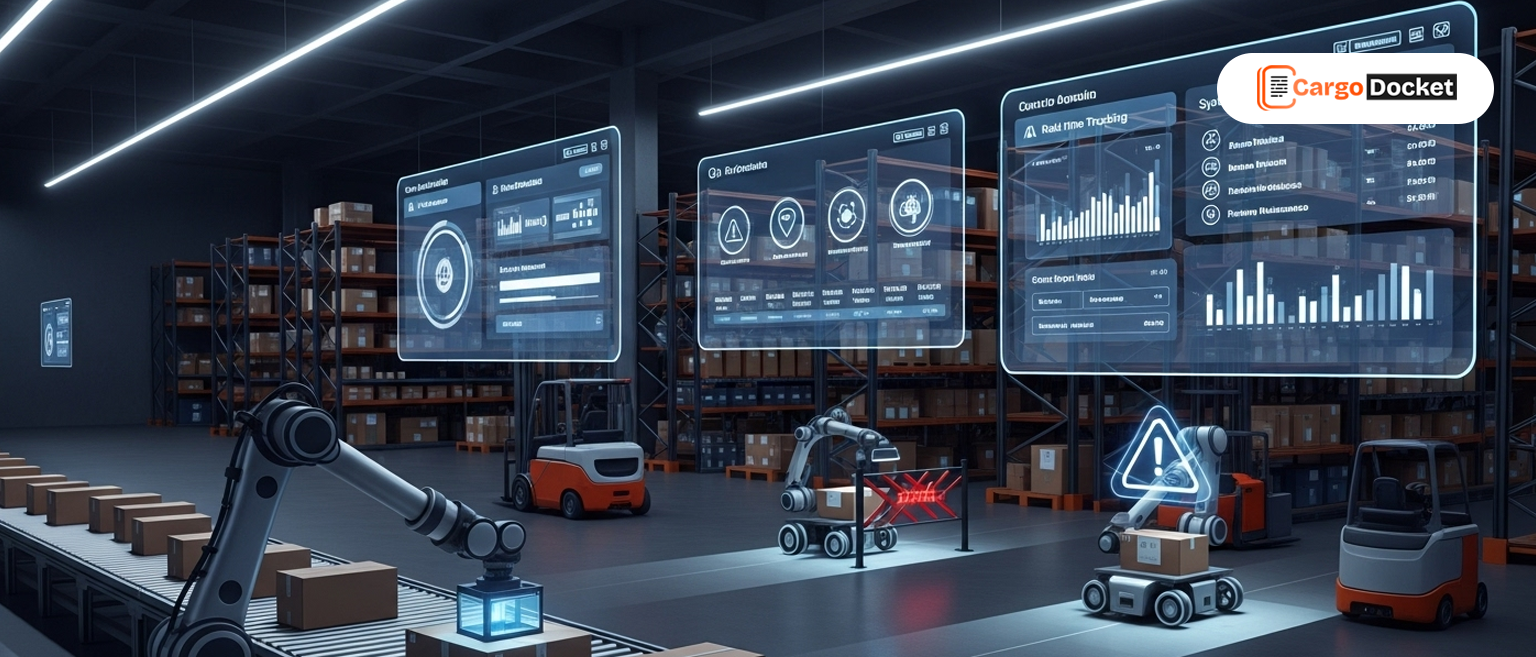Handling documents by hand can be tedious and error-prone. You understand exactly what we mean if you have ever wasted hours entering data from bills of lading, contracts, or invoices manually.
Intelligent Document Processing (IDP) can help with this. It is an actual, revolutionary system that handles unstructured documents and extracts clean, usable data using artificial intelligence (AI), machine learning, and natural language processing. IDP is already causing a stir in the finance and logistics industries.
What is Intelligent Document Processing?
Intelligent Document Processing (IDP) is a tech-driven solution that automates the extraction, classification, and validation of data from various document types, PDFs, images, emails, invoices, bills of lading, and even handwritten forms.
While traditional document automation might only scan and store files, IDP reads and understands the content inside them. It uses:
- OCR (Optical Character Recognition) to turn scanned text into machine-readable data.
- Natural Language Processing (NLP) to comprehend text structure and context.
- Accuracy is increased through machine learning (ML), which learns from data over time.
As a result, you get structured data from unstructured documents, without manual input.
How Does IDP Work?
Here’s a simple breakdown of how IDP handles documents:
- Document Capture – The system receives documents from emails, scanned files, portals, or APIs.
- OCR Scanning – Converts printed or handwritten content into digital text.
- Data Extraction – Pulls key fields like invoice numbers, due dates, PO numbers, amounts, and more.
- Validation – Cross-checks extracted data with master databases, ERP systems, or business rules.
- Routing – Sends the verified data into the appropriate business system (ERP, CRM, or RPA bots).
In short, IDP acts like a digital assistant who reads, understands, and files your documents at lightning speed and with minimal errors.
Why Combine IDP with Automation?
IDP doesn’t work in isolation. When paired with automation tools like RPA (Robotic Process Automation) or workflow automation software, it unlocks even greater efficiencies. While IDP extracts and cleans the data, automation tools use that data to trigger workflows, update systems, generate reports, or send notifications.
Imagine this when an invoice comes in, IDP extracts the vendor name, amount, and due date. Then, automation steps in, matches it with a purchase order, sends it for approval, and schedules payment. No human touch is needed. No missed payments. Just pure efficiency.
Top Intelligent Document Processing Use Cases
1. Accounts Payable Automation
Manual invoice entry is time-consuming and error-prone. Accounts payable automation with IDP, every incoming invoice is automatically scanned, verified, and entered into your system with no human involvement.
How it helps:
- Extracts data from invoices (vendor, date, amount, PO)
- Matches with purchase orders and receipts
- Flags duplicate or mismatched entries
- Sends for automated approvals and payment scheduling
2. Commercial Invoice Automation
In international logistics, commercial invoices are key to customs clearance and billing. Commercial invoice automation with IDP makes it easy to extract and validate critical information like HS codes, product descriptions, country of origin, and invoice values.
How it helps:
- Reads structured and unstructured invoice formats
- Standardizes and formats data for customs or ERP systems
- Syncs with CargoWise or any logistics ERP
- Supports high-volume document processing
3. Imports Bill of Lading Automation
Import shipments come with a load of documentation, literally. Imports bill of lading automation with IDP helps extract data from bills of lading, reducing the time and effort needed for data entry and job creation.
How it helps:
- Captures container details, vessel names, POL/POD, consignee/shipper info
- Validates against shipping instructions
- Automates job creation in ERP or TMS
- Flags inconsistencies for exception handling
4. Exports Bill of Lading Automation
On the export side, exports bill of lading automation with IDP reduces delays and errors by digitizing key fields from the shipper’s BoL, speeding up compliance checks, and reducing back-and-forth with agents and clients.
How it helps:
- Extracts key export data points (port details, cargo type, weight, dimensions)
- Cross-checks with booking details
- Automates document uploads into ERP or shared portals
- Helps generate shipping instructions or labels
How to Get Started with IDP in Your Business?
Thinking of deploying IDP? Here’s a simple approach to get moving:
- Start small – Choose a single use case like invoice processing or BoL automation.
- Select the right partner – Choose a solution that fits your industry and document formats.
- Train the AI model – Use real documents to “teach” the system what to extract.
- Integrate with your systems – Connect it with your ERP, TMS, or accounting platform.
- Scale gradually – Once you’re confident, expand into other departments and document types.
Conclusion
Intelligent document processing is no longer optional. For logistics companies, freight forwarders, and finance teams, it’s quickly becoming essential.
Whether you’re buried under invoices or dealing with customs paperwork daily, IDP can help you work smarter, not harder. From faster billing cycles to fewer data entry errors, the benefits speak for themselves.
So, if you’re tired of chasing documents and correcting errors, it’s time to let AI handle all of the work. Begin with a single procedure. Take note of the change. Next, increase the scale.
Get in touch with our experts or book a demo to discover how IDP can simplify your operations today.




